Padua and Vicenza: the pictorial tour
As today is my last day in Venice, there will be more than one post. Let's kick it off with the pictorial results of my trips to Padua and Vicenza, respectively.
The Capelli degli Scrovegni, aka my reason for coming to Padua. Sadly, it's forbidden to take pictures of the Giotto frescos inside.
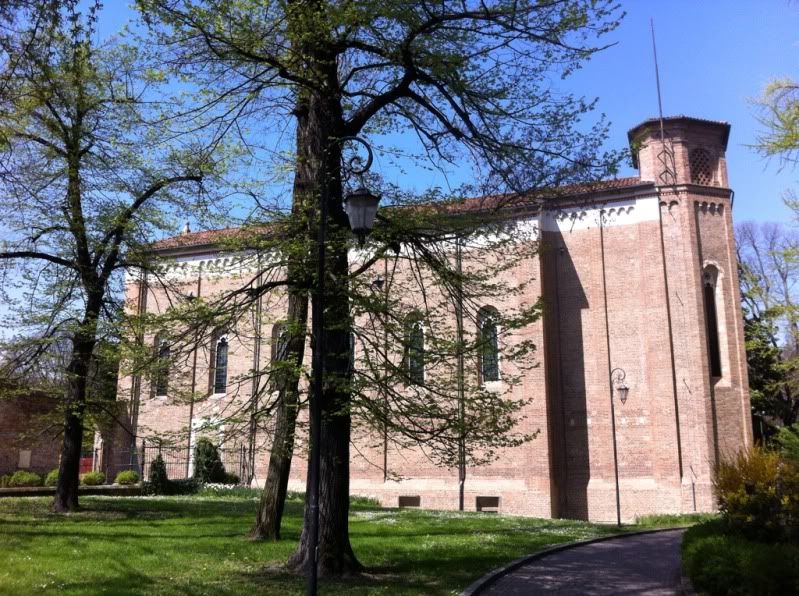
Parts of the university. Which wants money for sightseeing, so I had to stay outside.
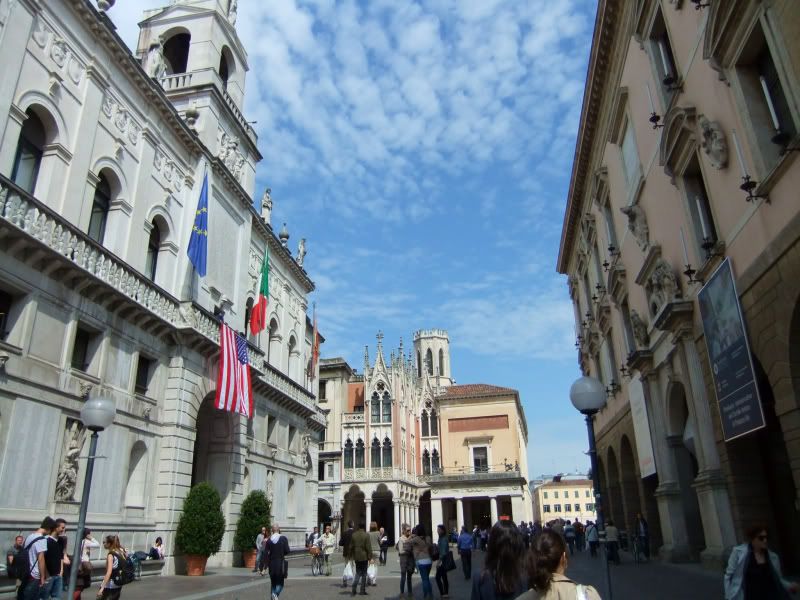
San Antonio, aka Padua's other main attraction and most famous resident saint:
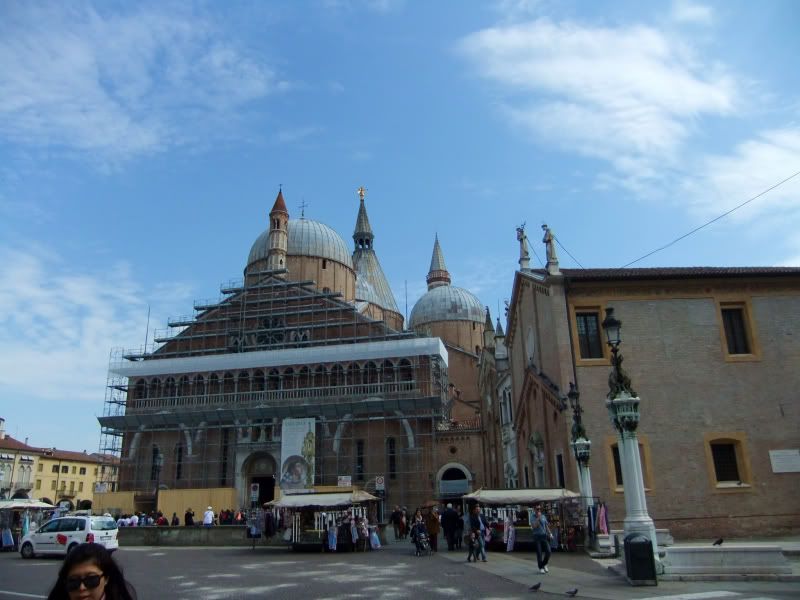
Tomb and shrine of same, sans chin or tongue:

St. Giuliano, not mentioned in guide books, but free of charge:
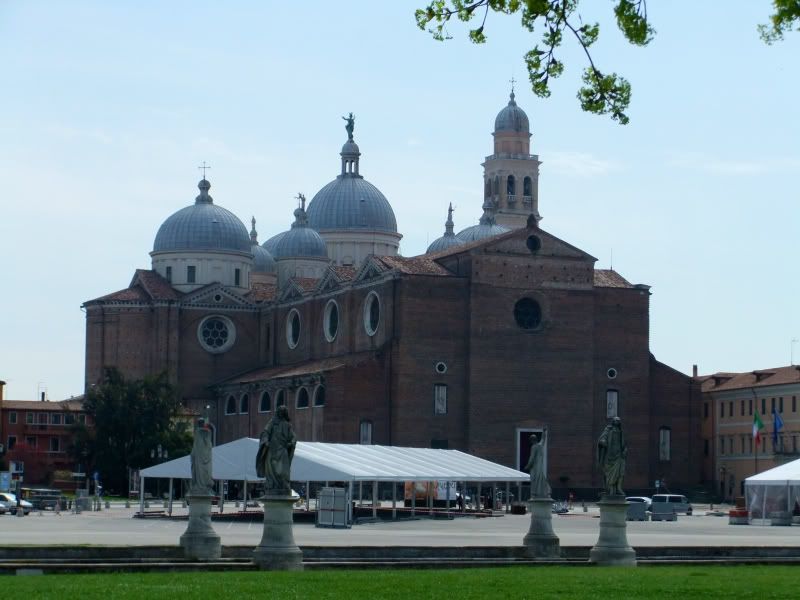
Streets in the former ghetto:

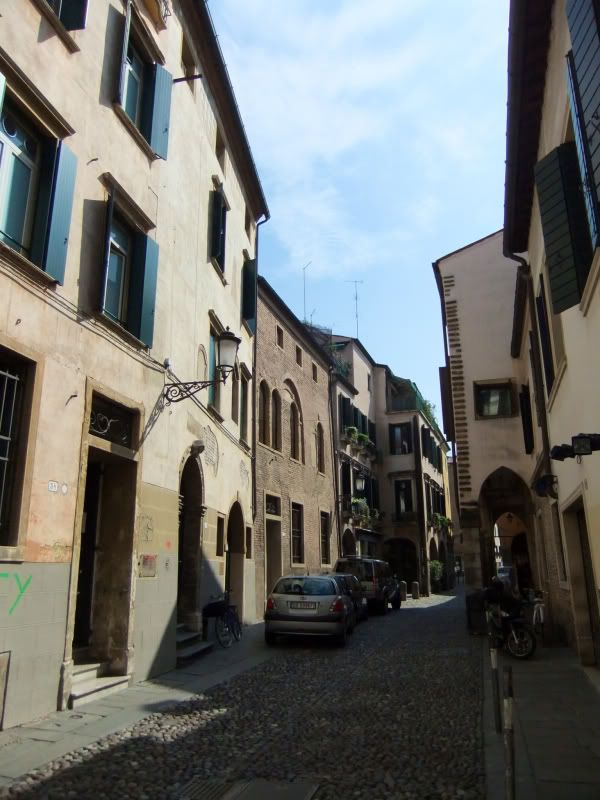
The Duomo:
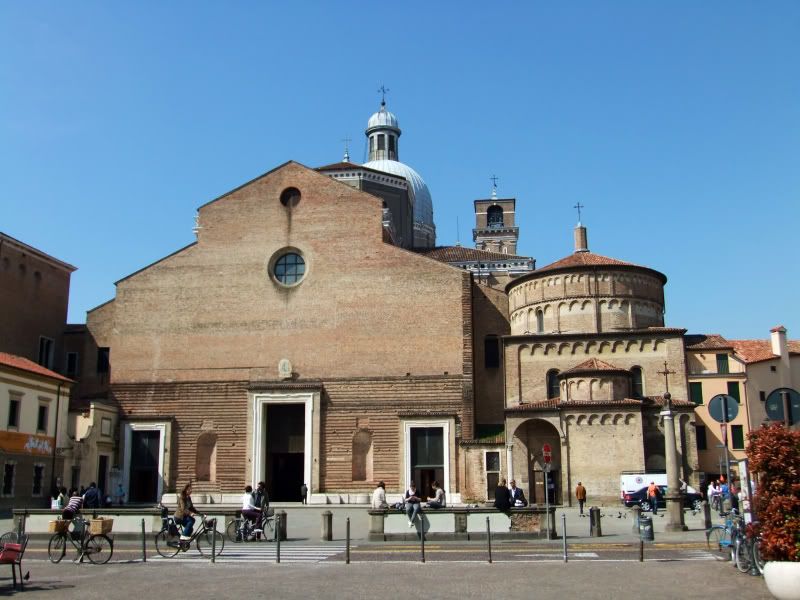
The Palazzo della Regione (not free of charge) and market in front of same:

Back to Giotto once more, and thus I conclude the Padua part of this pic spam:
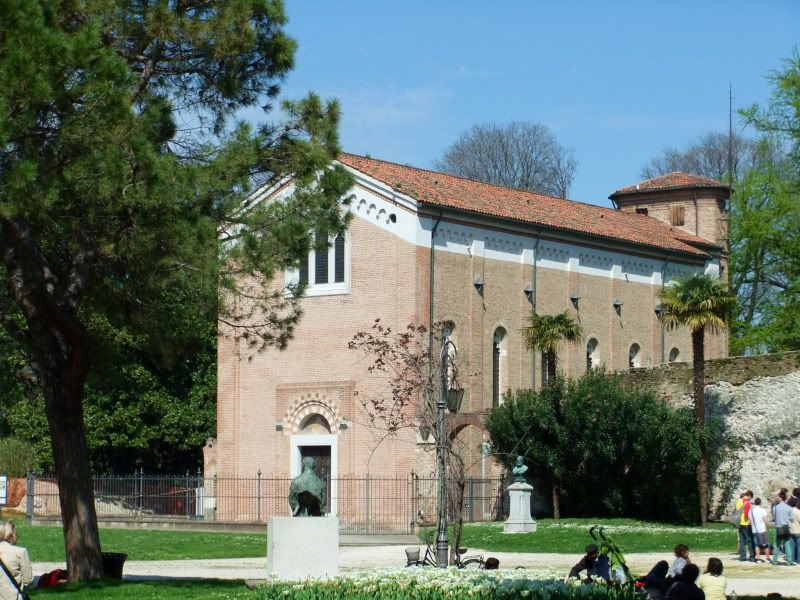
With newly restored fortunes, I visited super Renaissance architect Palladio's hometown, Vicenza, the next day.
First, have an overview of the town. To get it, one has to do rush up to the Monte Berico, where opposite the basilca, to which we'll get in a minute, you have the most magnificent view. Mind you, I knew I had to do this first after arrival, not later in the day, because by now Italy has become pretty hot.
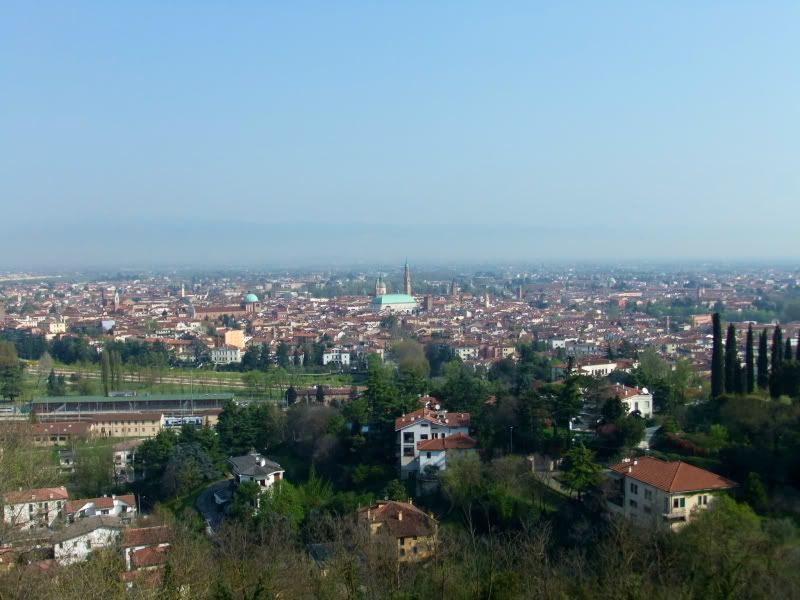
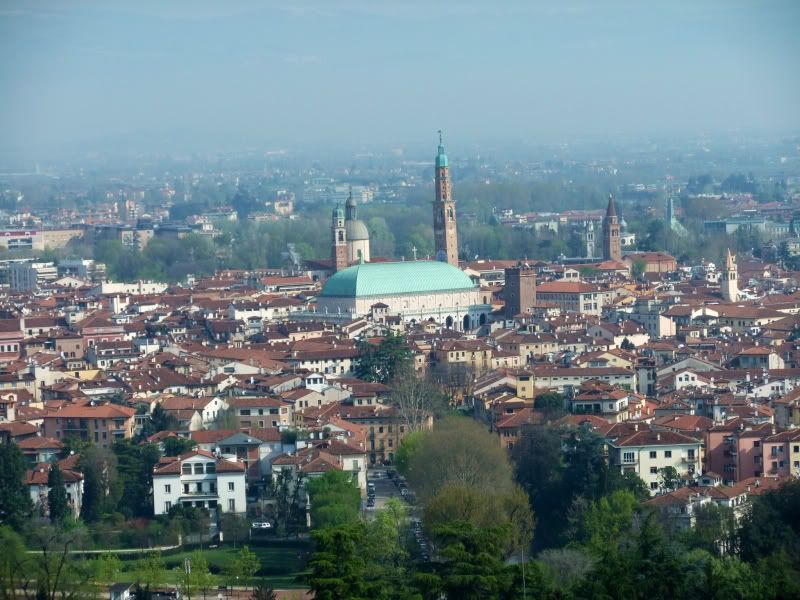
Now check out the Basilica di Monte Berico. It has a two fold nature, all baroque on one side and all fortress on the other.
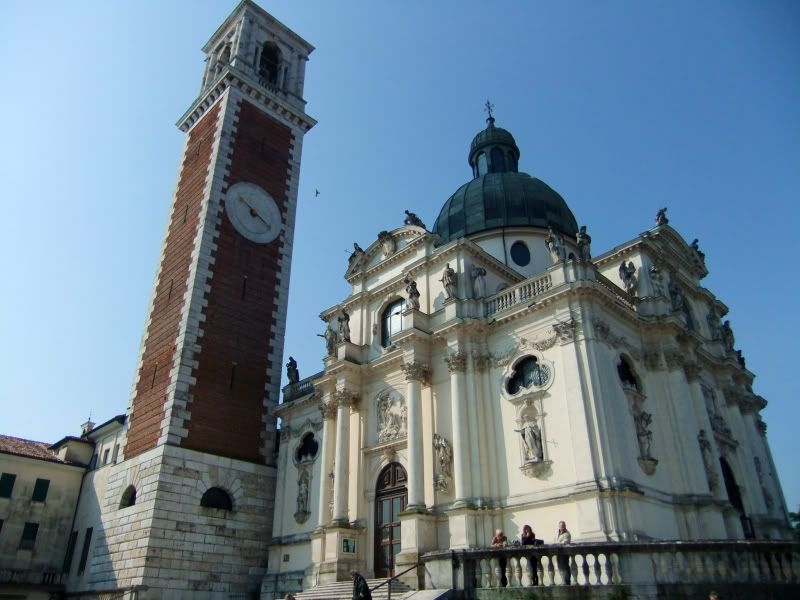
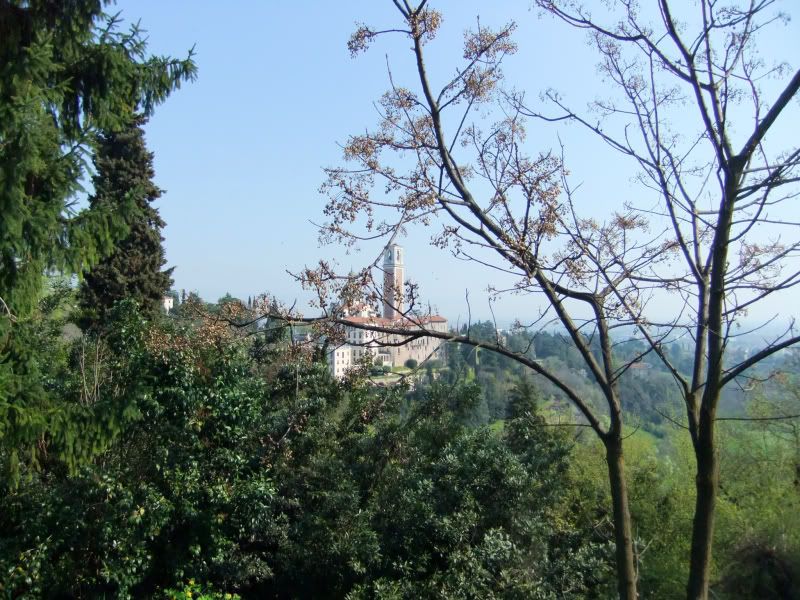
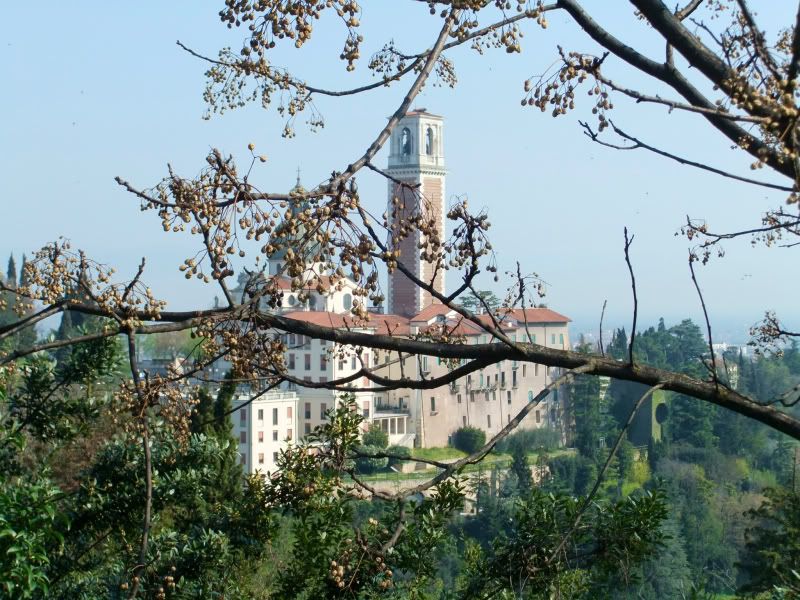
The Inside is all baroque, though.

Now, to get up to the Monte Berico, you can walk in style through these arcades:
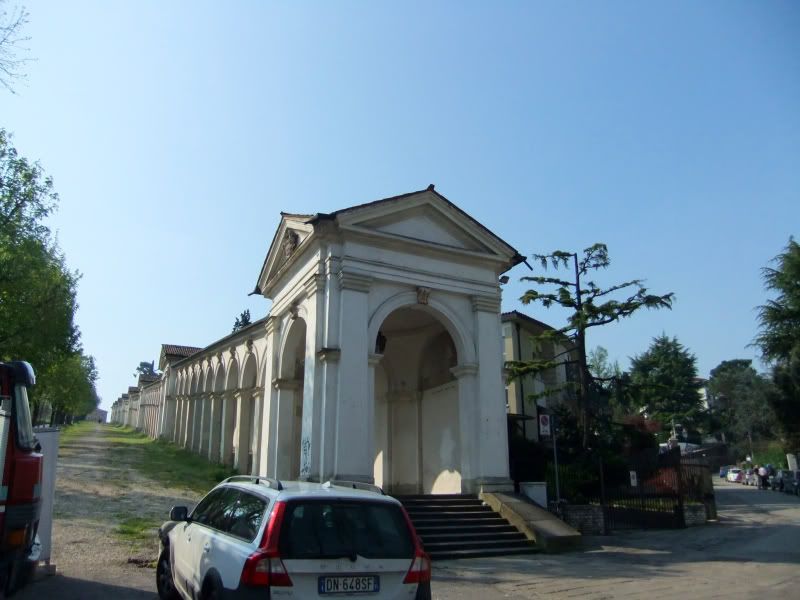

The two most famous villas, for which you'll have to walk up and down mountains some more, are the Villa Valmarana, also known as "Ai Nani" because of the dwarves - nani - on the walls:
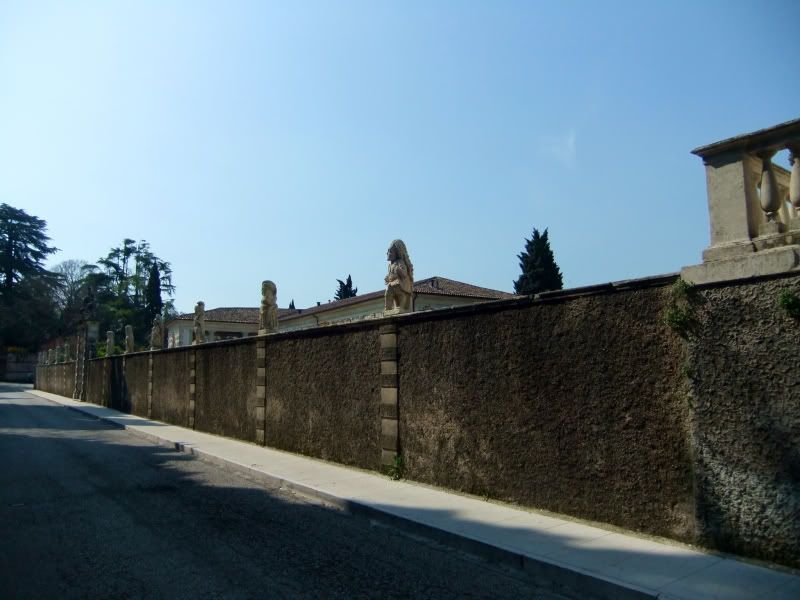
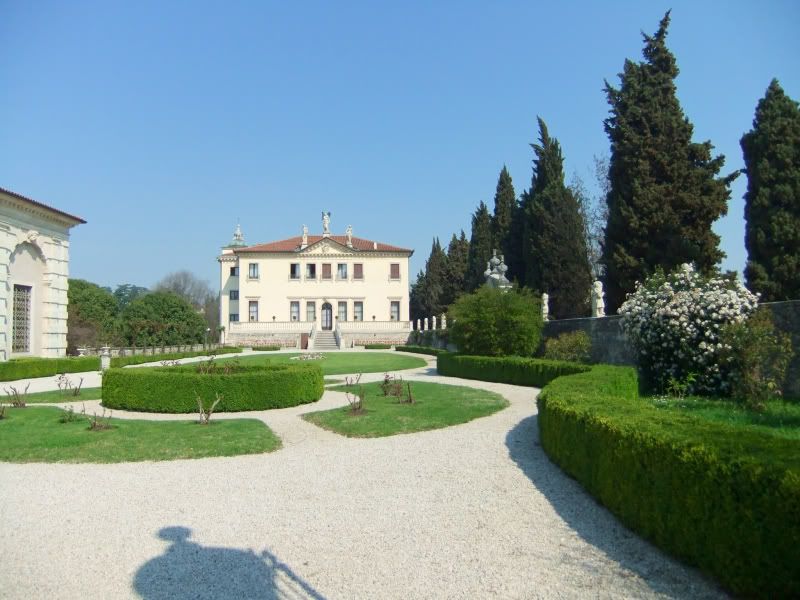
And La Rotonda. Which might strike Americans as eerily familiar, since Jefferson loved the design so much he had his architect(s) pinching it for Monticello. It's the most famous villa Palladio built, and full of gorgeous frescoes inside, but these one isn't allowed to photograph.
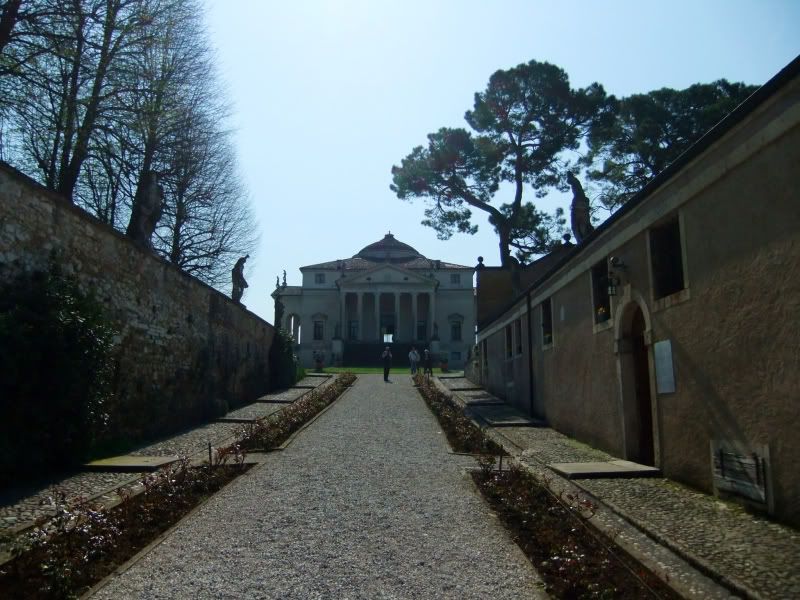
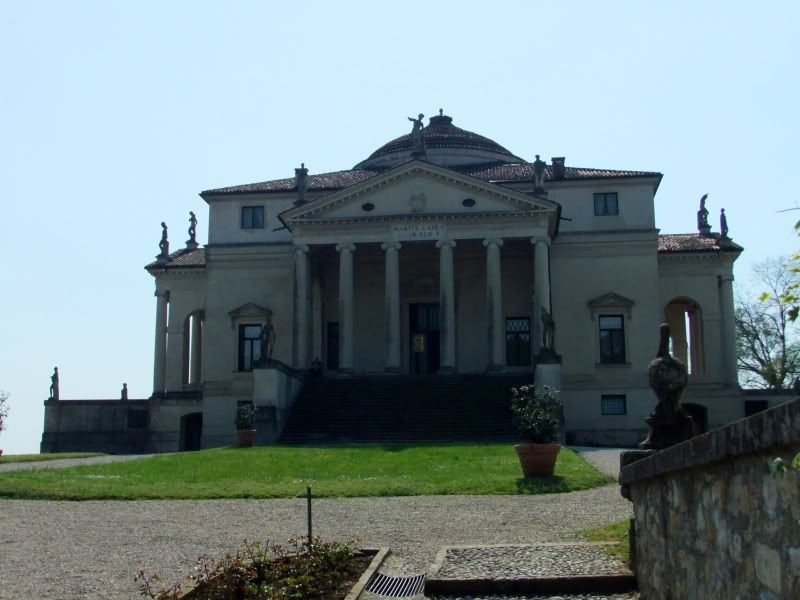
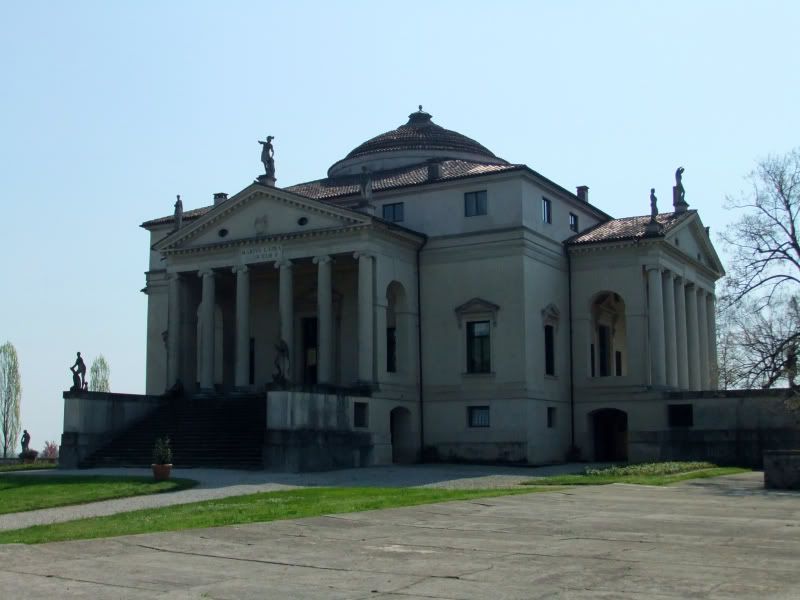
Next, I went down into the city centre. The building you can see emerging here is the the Basilica Palladiana, which isn't a church but used to be the sort of town hall, built by guess whom.
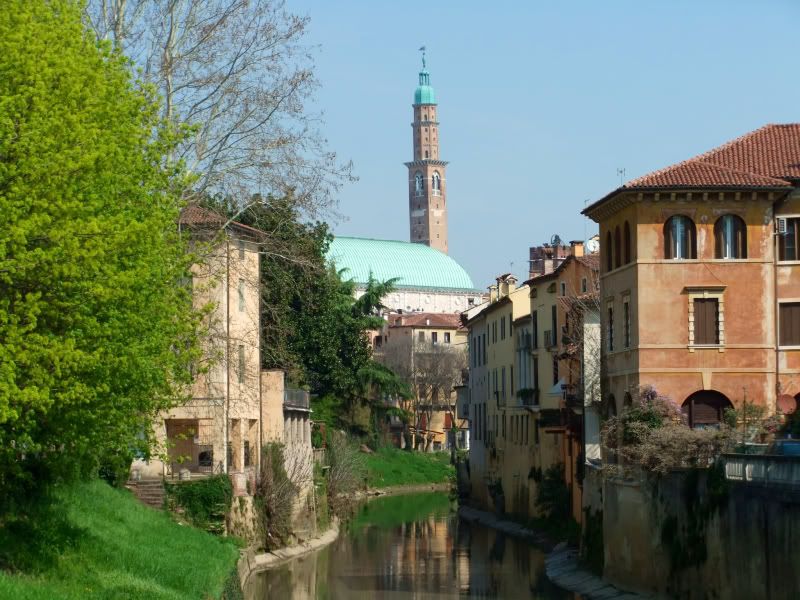
This is the entire building as seen from Monte Berico:
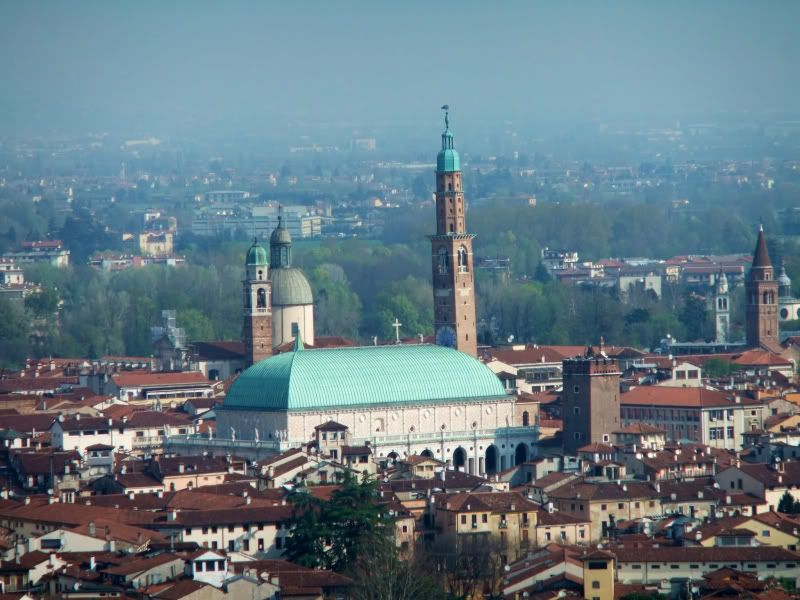
And here are some impression of the square around it.
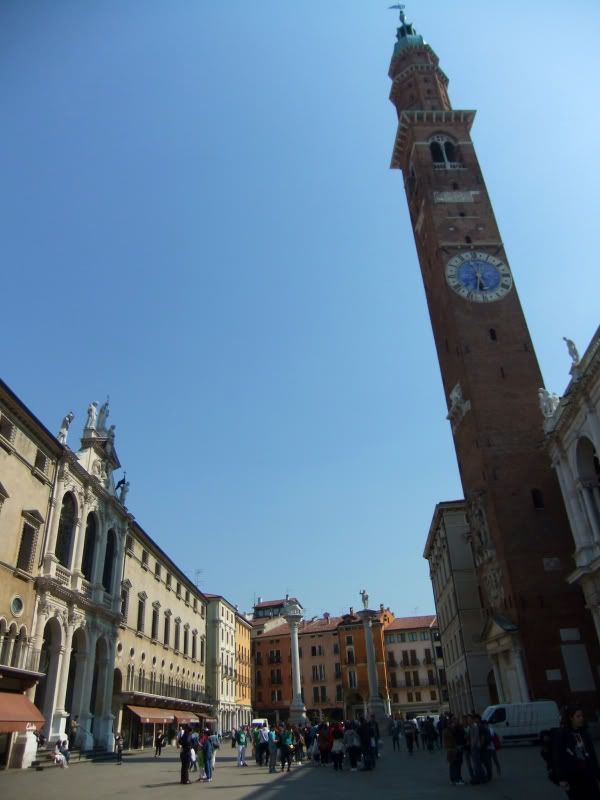
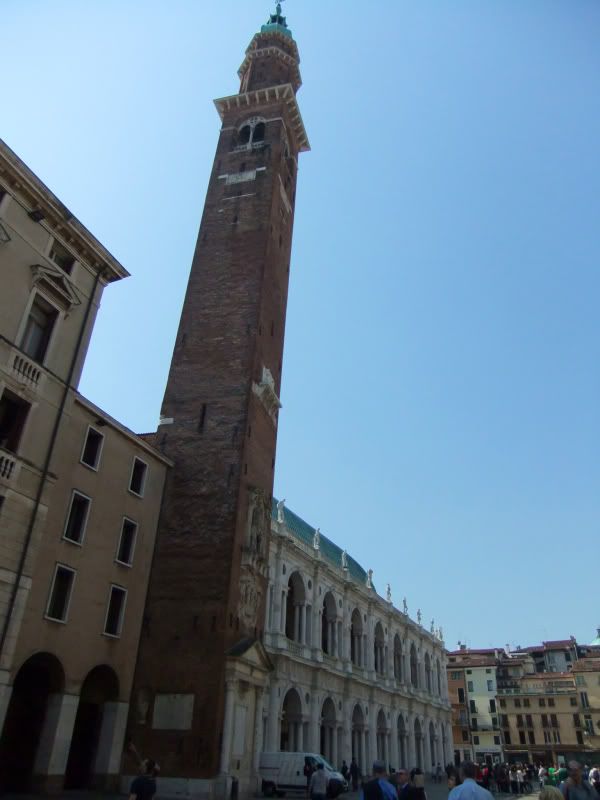
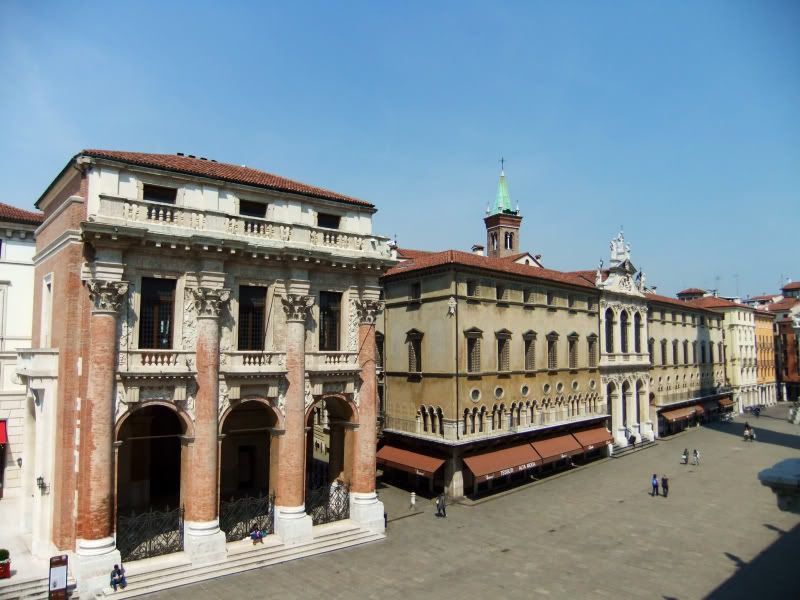
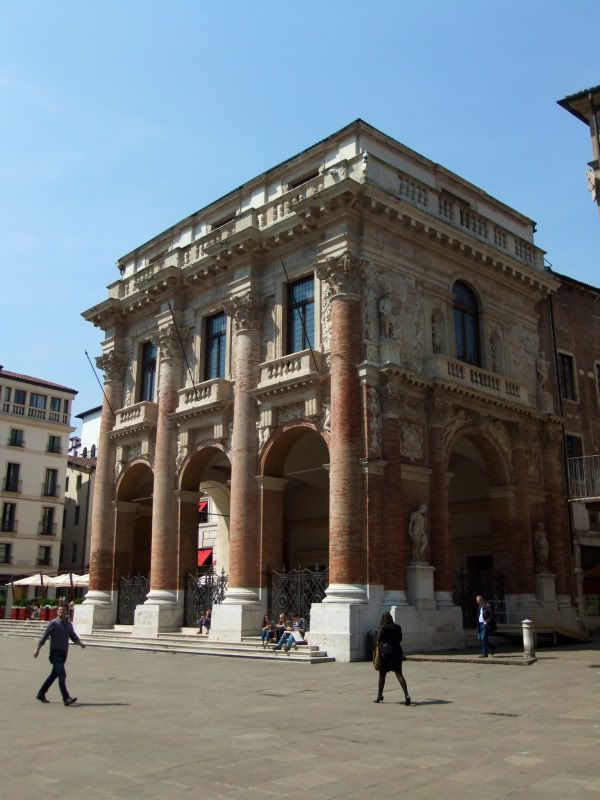
Elsewhere: the Duomo, from above and close up:
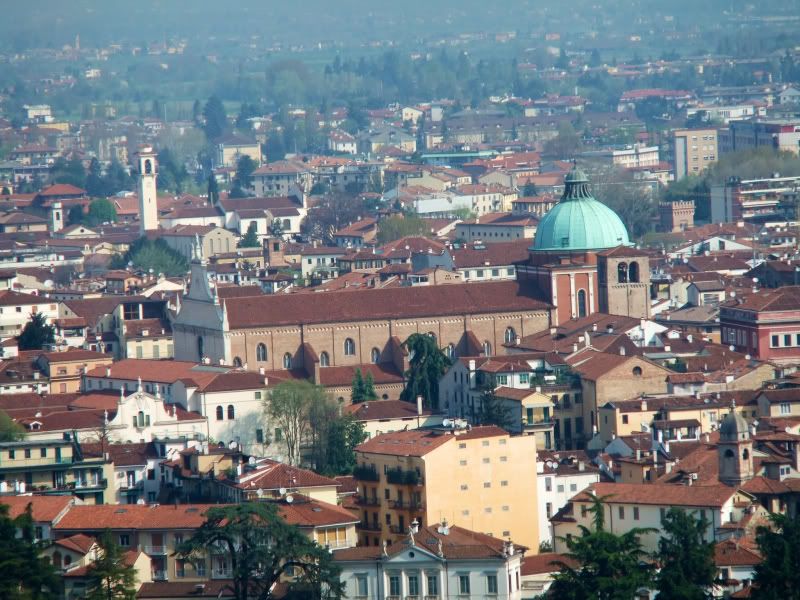
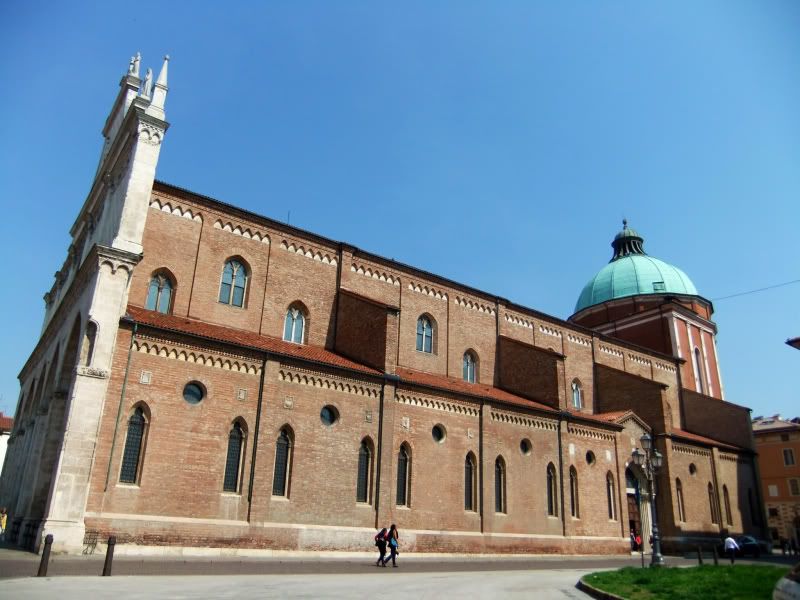
And a part of the most famous street, the Corso Palladio:
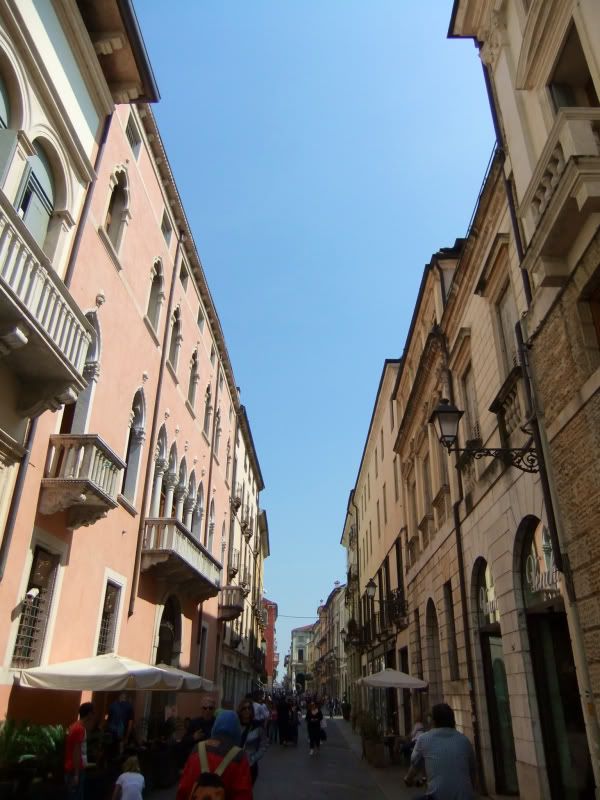
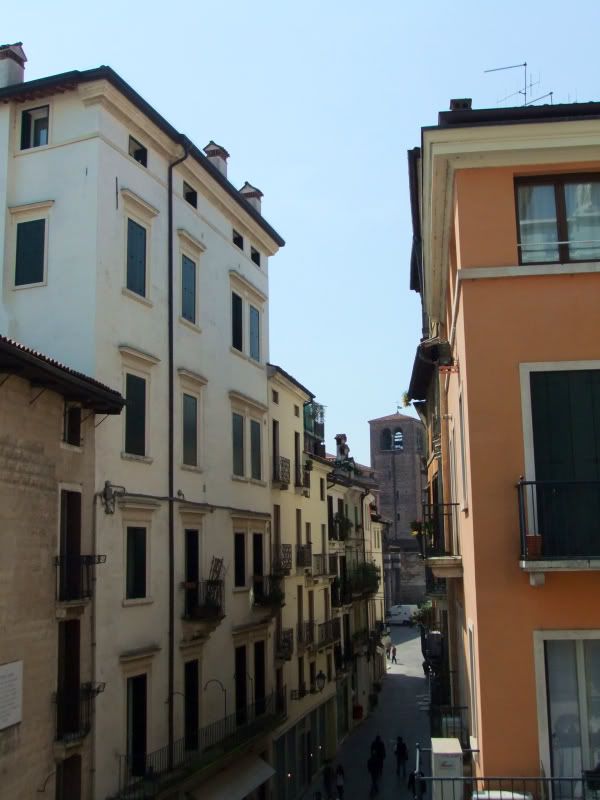
This is the Palazzo Chiericati, which today hosts the town museum and, of course, has Palladio as its architect:
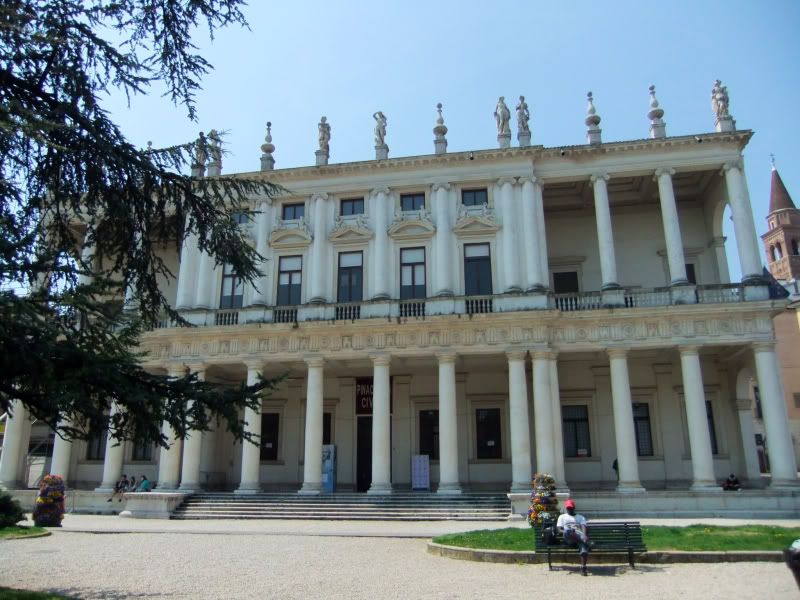
And just to make other Renaissance architects feel really bad, he also built a theatre which was modelled on the ancient Greek and Roman ones. Except for the part that it was inside a building and thus is completely preserved. And AWESOME. Behold the Teatro Olimpico:
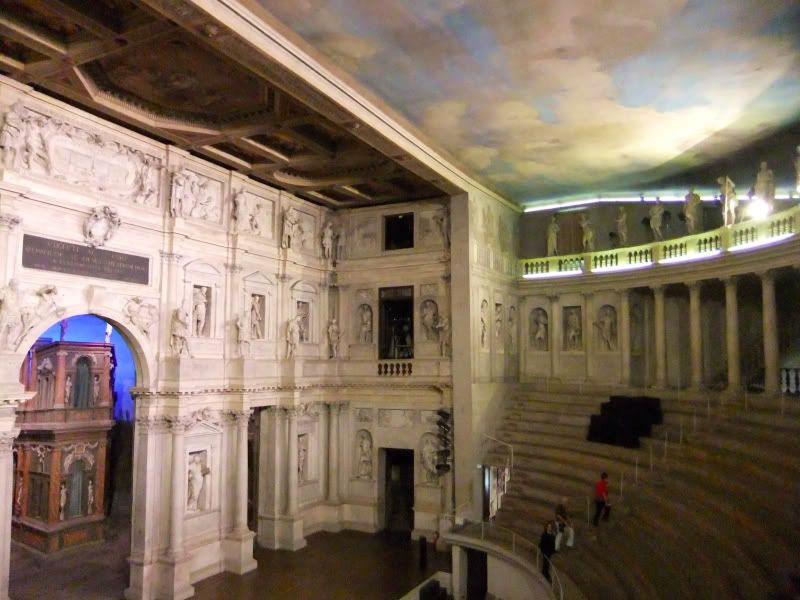
Now is that a stage set or what?
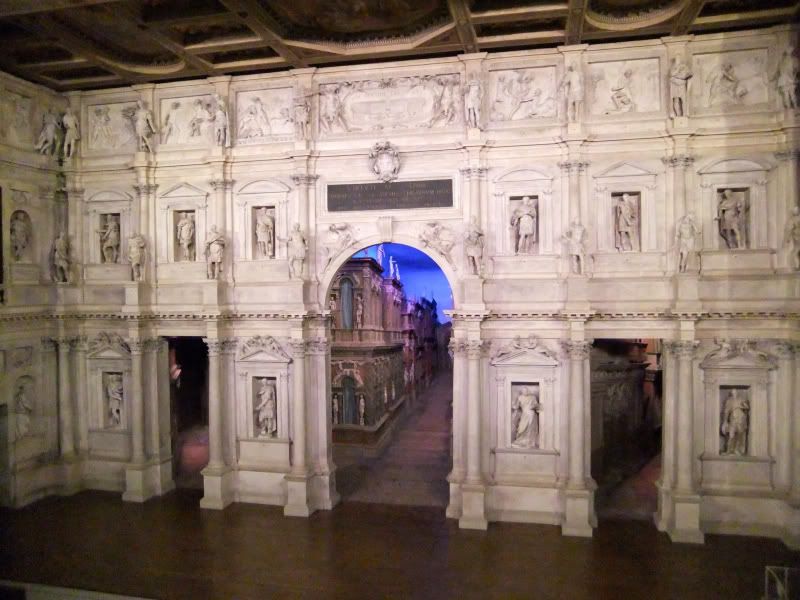
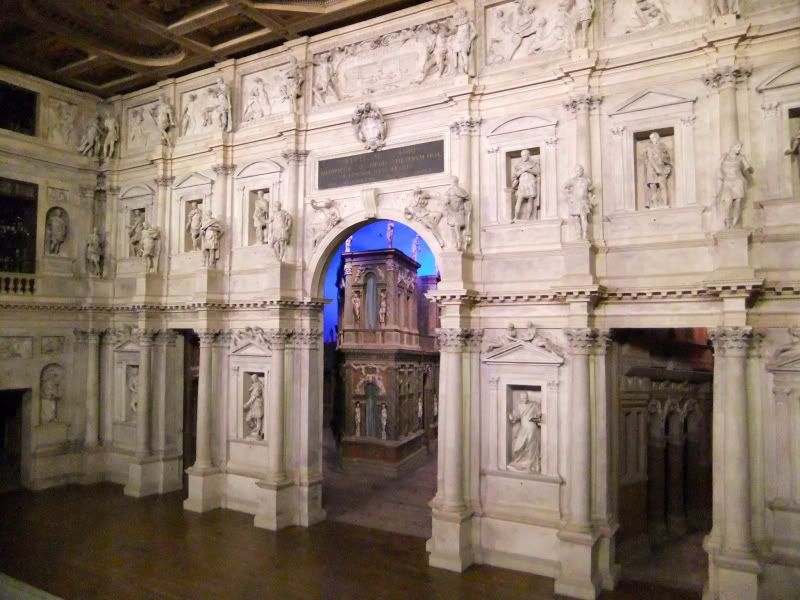
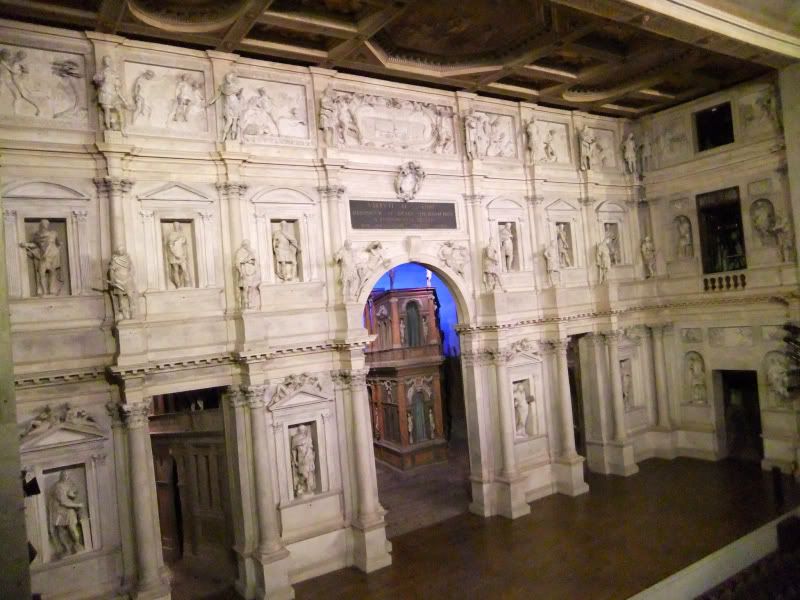
The audience part didn't photograph as well, but just to give you another impression:
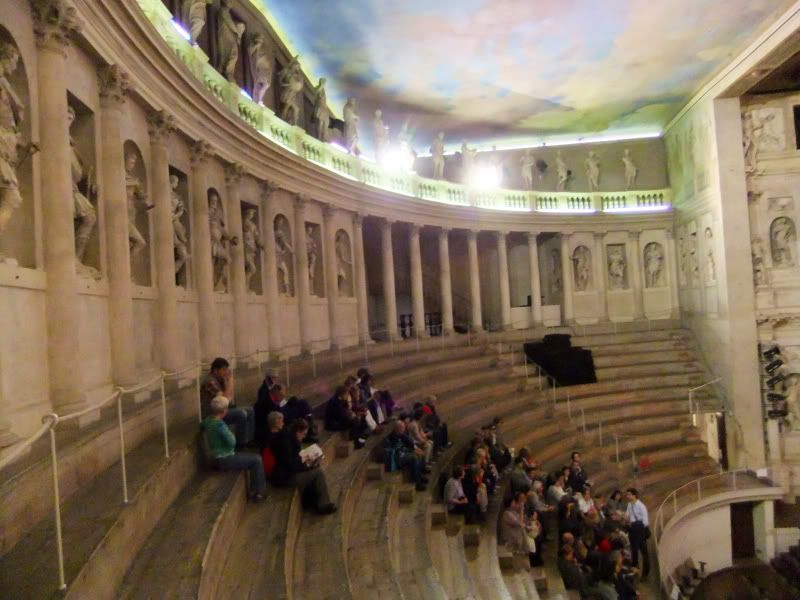
And with this wonderful example of architectural optical illusion I wrap Vicenza up:
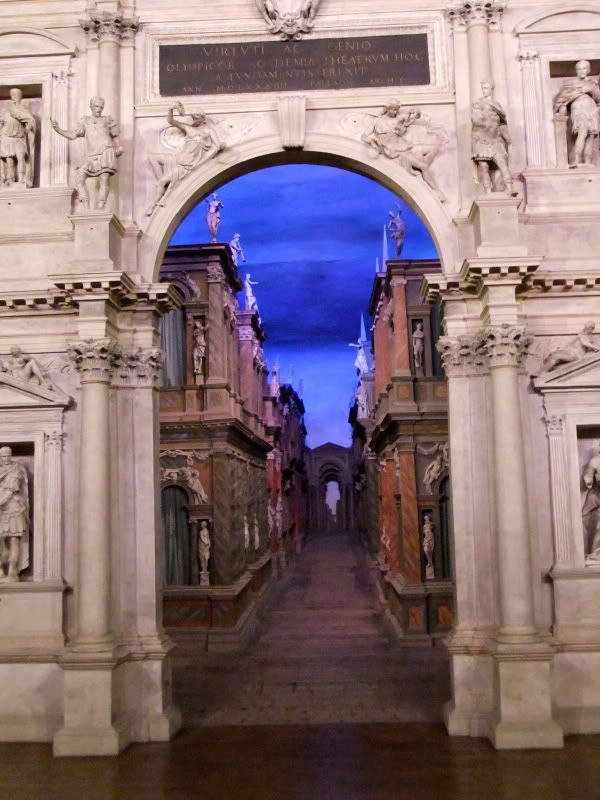
This entry was originally posted at http://selenak.dreamwidth.org/889386.html. Comment there or here, as you wish.
The Capelli degli Scrovegni, aka my reason for coming to Padua. Sadly, it's forbidden to take pictures of the Giotto frescos inside.

Parts of the university. Which wants money for sightseeing, so I had to stay outside.

San Antonio, aka Padua's other main attraction and most famous resident saint:

Tomb and shrine of same, sans chin or tongue:

St. Giuliano, not mentioned in guide books, but free of charge:

Streets in the former ghetto:


The Duomo:

The Palazzo della Regione (not free of charge) and market in front of same:

Back to Giotto once more, and thus I conclude the Padua part of this pic spam:

With newly restored fortunes, I visited super Renaissance architect Palladio's hometown, Vicenza, the next day.
First, have an overview of the town. To get it, one has to do rush up to the Monte Berico, where opposite the basilca, to which we'll get in a minute, you have the most magnificent view. Mind you, I knew I had to do this first after arrival, not later in the day, because by now Italy has become pretty hot.


Now check out the Basilica di Monte Berico. It has a two fold nature, all baroque on one side and all fortress on the other.



The Inside is all baroque, though.

Now, to get up to the Monte Berico, you can walk in style through these arcades:


The two most famous villas, for which you'll have to walk up and down mountains some more, are the Villa Valmarana, also known as "Ai Nani" because of the dwarves - nani - on the walls:


And La Rotonda. Which might strike Americans as eerily familiar, since Jefferson loved the design so much he had his architect(s) pinching it for Monticello. It's the most famous villa Palladio built, and full of gorgeous frescoes inside, but these one isn't allowed to photograph.



Next, I went down into the city centre. The building you can see emerging here is the the Basilica Palladiana, which isn't a church but used to be the sort of town hall, built by guess whom.

This is the entire building as seen from Monte Berico:

And here are some impression of the square around it.




Elsewhere: the Duomo, from above and close up:


And a part of the most famous street, the Corso Palladio:


This is the Palazzo Chiericati, which today hosts the town museum and, of course, has Palladio as its architect:

And just to make other Renaissance architects feel really bad, he also built a theatre which was modelled on the ancient Greek and Roman ones. Except for the part that it was inside a building and thus is completely preserved. And AWESOME. Behold the Teatro Olimpico:

Now is that a stage set or what?



The audience part didn't photograph as well, but just to give you another impression:

And with this wonderful example of architectural optical illusion I wrap Vicenza up:

This entry was originally posted at http://selenak.dreamwidth.org/889386.html. Comment there or here, as you wish.